Search Results
BART unveils modernized Powell St. Station in time for holiday shopping
The team behind the Powell St. Modernization Program poses for a photo under “Elysium” by Stephen Galloway on Nov. 22, 2022. Powell St. Station’s got a new groove. On Tuesday, Nov. 22, BART unveiled the Downtown San Francisco station’s updated look and feel – just in time to welcome holiday shoppers to the
BART’s Small Business Support Services provide assistance to local entrepreneurs
Catherean and Taishawn Mitchell are pictured. Catherean and Taishawn Mitchell opened their Oakland-based trucking company in just 17 days. They won their first contract within 30 days of being in compliance. And they haven’t slowed down since. “We are first-generation entrepreneurs, my husband and I,”
BART runs Sunday schedule on Memorial Day, Monday, May 30
On the Memorial Day holiday -- Monday, May 30, 2011 -- BART will operate on a Sunday schedule, which means service begins around 8 am. Riders also should be aware of the anticipated major delays through the Transbay Tube, and additional transfers required for some passengers, due to vital repair work. Full
BART carpet: Like wool seats, another relic gone for good
Not many people had a soft spot for carpet on BART. The floors of BART train cars for 40-plus years were one of the few in public transit, covered in a bluish-grayish carpeting. This summer, the last of the carpet was ripped out and replaced with easy-to-clean vinyl flooring. Let us be the first to say, good
BART unveils new fare gates at West Oakland Station
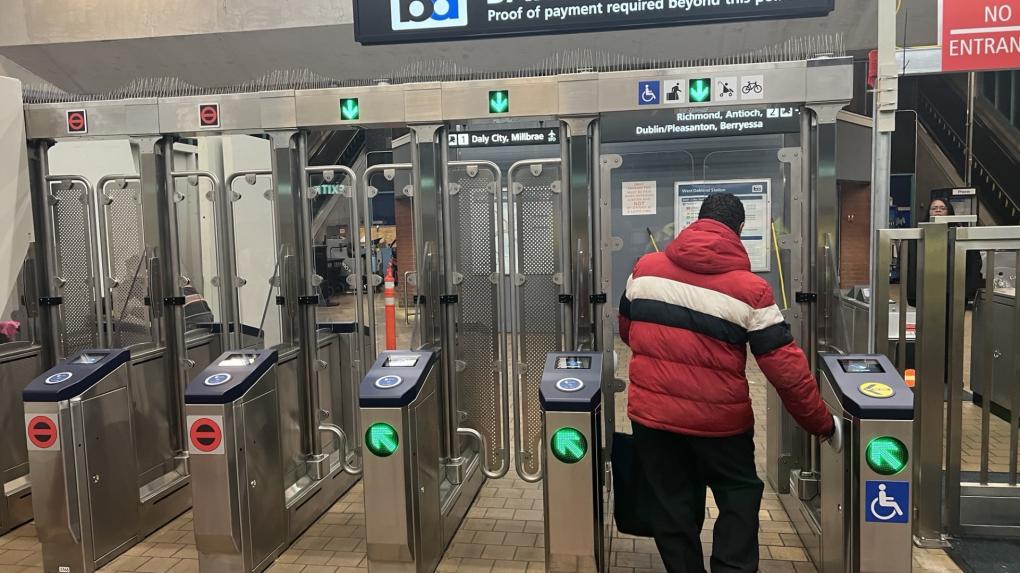
As part of its Safe and Clean Plan, on December 28, 2023, BART unveiled prototypes of its new fare gates at the West Oakland Station. The system is upgrading its fare gates for the first time in 20 years. BART has committed to opening 700+ new fare gates systemwide by the end of 2025.
Watch the time lapse video.
Mechanical Door Lock to be Installed Soon
These are not the final version of the fare gates that will be installed throughout the rest of the system. The development team will be installing the latest door-braking technology in the coming weeks. This mechanical door lock will be exclusive to BART. No other transit system in the world has it. Once installed, these gates will be harder to push through than any other fare gate in the world.
The prototypes now installed at West Oakland will test the new gates in a station environment with riders. Initial field testing will primarily focus on door material options.
BART will announce the next eight stations to get the new fare gates at the January 11, 2024, board meeting.
“As a transportation system, we take tremendous pride in saying our riders are what runs BART," said BART General Manager Bob Powers. "Among the world’s transit agencies, BART relies the most on rider fares; they are directly responsible for funding our operations. These new, state-of-the-art fare gates will protect against fare evasion, expand access to transit-dependent riders, and reduce system downtime due to maintenance, which helps boost investment in BART’s long-term growth.”
“We welcome the new fare gates starting at West Oakland and its future expansion to other stations," said BART Police Chief Kevin Franklin. "These stronger, higher gates will limit fare evasions through self-enforced fare payments, keep riders safe and engaged to return to BART, and have police officers focused on more serious situations that require emergency services.”
While BART is rolling out new fare gates to boost safety and reduce fare evasion, the agency is also working to increase access to BART by more than doubling the discount for low-income individuals from 20% to 50% beginning January 1, 2024.
BART’s Safe and Clean Plan focuses on attracting riders to return to the system by reimagining the BART experience. BART is making dramatic improvements, from new payment systems to infrastructure renovations. It's all being done to guarantee customers a clean, safer ride and ensure BART is the safest way to travel around the Bay. Riders can provide feedback about the new gates at bart.gov/comments.
Role in the Region: BART helps keep cars off the road

In July, BART released the Role in the Region Report, a comprehensive study of BART's impact on the Bay Area illustrated by new analyses, data visualizations, and powerful personal narratives. Over the coming weeks, we'll be sharing some of the key insights from the report in a series of Role in the Region articles here on bart.gov. Below is the first of these articles. We encourage you to read the full report - click here - and visit the project webpage at bart.gov/roleintheregion.
Today's post focuses on how BART keeps cars off the road, significantly reducing traffic congestion. See the full report for methodology.
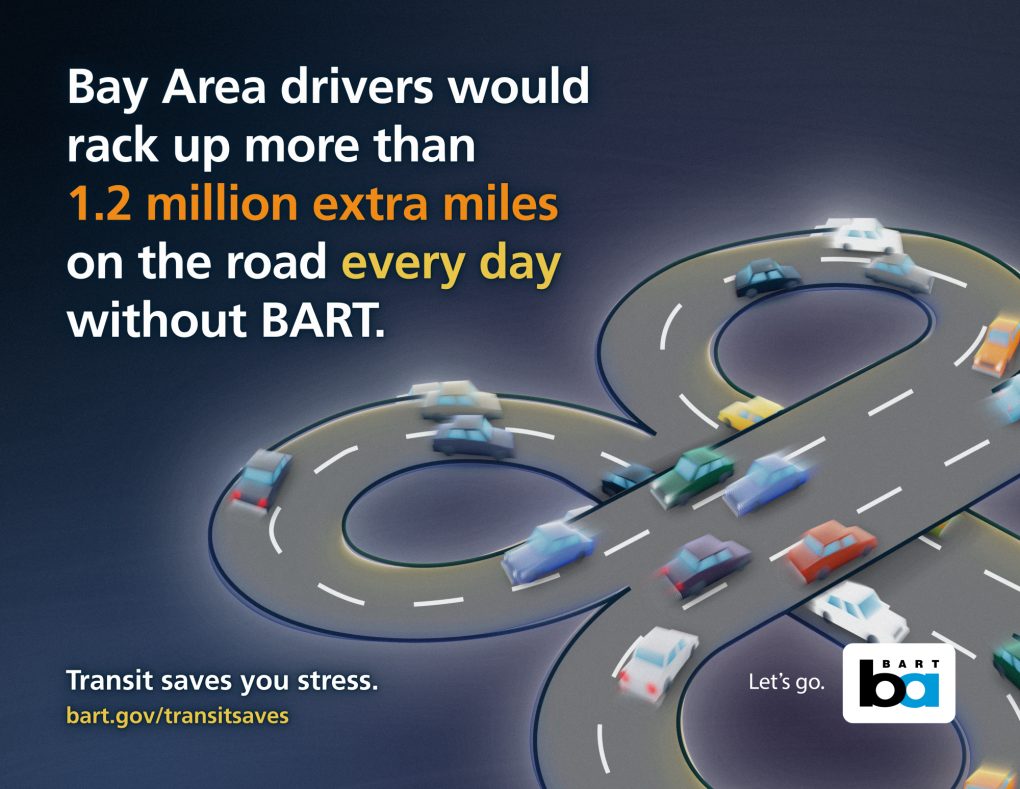
Spending hours delayed by traffic means less time spent with family and friends or for recreation, which degrades quality of life for everyone, regardless of whether they use transit. Time spent in congestion is also less productive time than working and shopping, which results in less economic activity across the region. Heavy congestion may deter people from taking trips. Since there are no viable alternatives aside from BART and driving between Eastern Contra Costa/Alameda counties and Inner East Bay/West Bay areas, increased congestion may lead to less regional mobility.
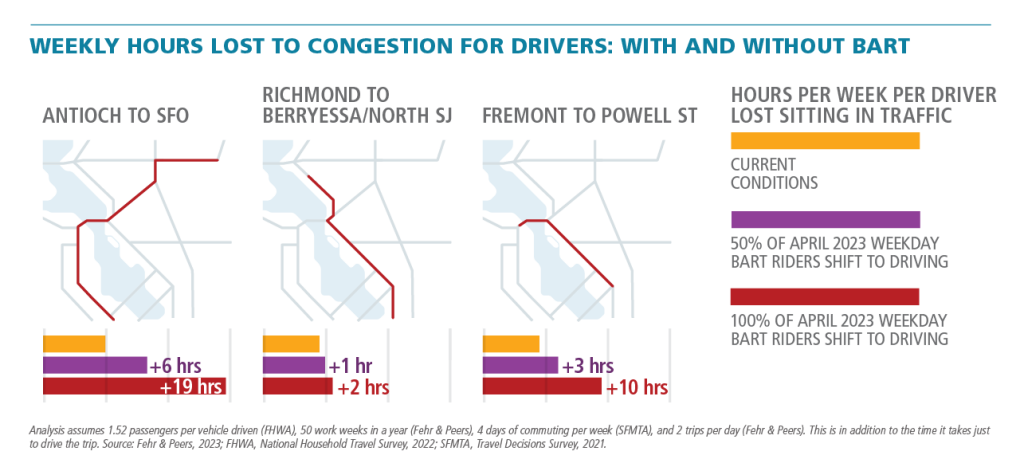
BART service even benefits residents that choose to drive, in part by significantly reducing their time lost to congestion and thereby improving quality of life for everyone who lives here, whether they use transit or not. As shown in the image above, if BART did not exist, for some trips drivers could experience upwards of 19 hours in congestion weekly, in addition to the time it would take without any traffic.
What BART Riders Say…
“When I worked, it was so nice to have downtime between work and being a busy mom. BART made it so when I got home, I was relaxed instead of stressed by traffic. It really was wonderful. Now it means I’m heading to fun!"

If BART ceased to exist and riders had to drive instead, traffic could increase by 73% on the Bay Bridge and 22% in the Caldecott Tunnel during morning peak commute hours, which would exceed roadway capacity. To support the increased traffic volume, up to three additional lanes would need to be added to the Bay Bridge and an additional lane in the Caldecott Tunnel.
What BART Riders Say…
“[Without BART,] we probably wouldn't go to as many activities where we'd be fighting traffic and trying to find parking.”
BART Connects
As part of the Role in the Region Report, BART solicited stories from riders to learn how our public transportation system impacts their lives. The stories are compiled at bart.gov/bartconnects.
Below, read an excerpt longtime rider Linda Healey and how BART allowed her time to relax between work and raising a child. Find the full story here.

BART Connects: A working mom remembers when her only downtime each day was her BART ride
Linda Healey commuted to San Francisco from Walnut Creek for more than twenty years. When her son was young, those daily BART rides were her only downtime in the day. “BART got me home to my child quickly,” she said. “And it got me home unstressed because I could relax, rather than sit in traffic. That was a gift.” Today, Healey’s son – now in his thirties and living in Oakland – does the same commute his mother did for so many years, though he hops on the train a few stops up the line. He even works for the same company. “I passed the BART baton to him,” Healey said. “Hopefully one day, he’ll get to take it just for fun.”
Read the Story
Revisit some of our favorite BART stories from 2024
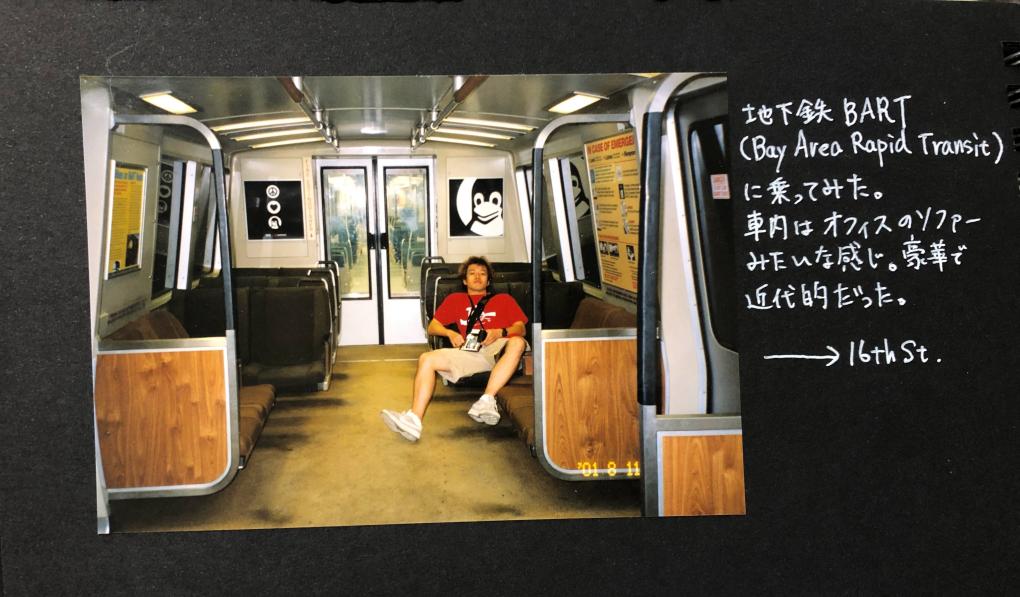
There are a million stories on BART. In 2024 we talked to riders, artists, train operators, transit fans, and more about what BART means to them. We celebrated the Transbay Tube and the Fleet of the Future.
Here are some of our favorites stories from 2024:
Bay Area history reclaimed: The story of 95-year-old artist Janet Bennett and her longstanding tile artworks at 16th and 24th St. stations

Janet Bennett’s tile murals have come to define the character of BART's Mission District stations, and yet, in the fifty-plus years since the tiles were placed, her contribution has gone unattributed...This past Women’s History Month, BART was honored to bring forward the story of the artworks as well as that of the wonderful midcentury artist who made them.
The mother of all Train Operators: BART's Mama Linda on the miles she’s traveled, the meals she’s shared, and the ancestors who shaped her
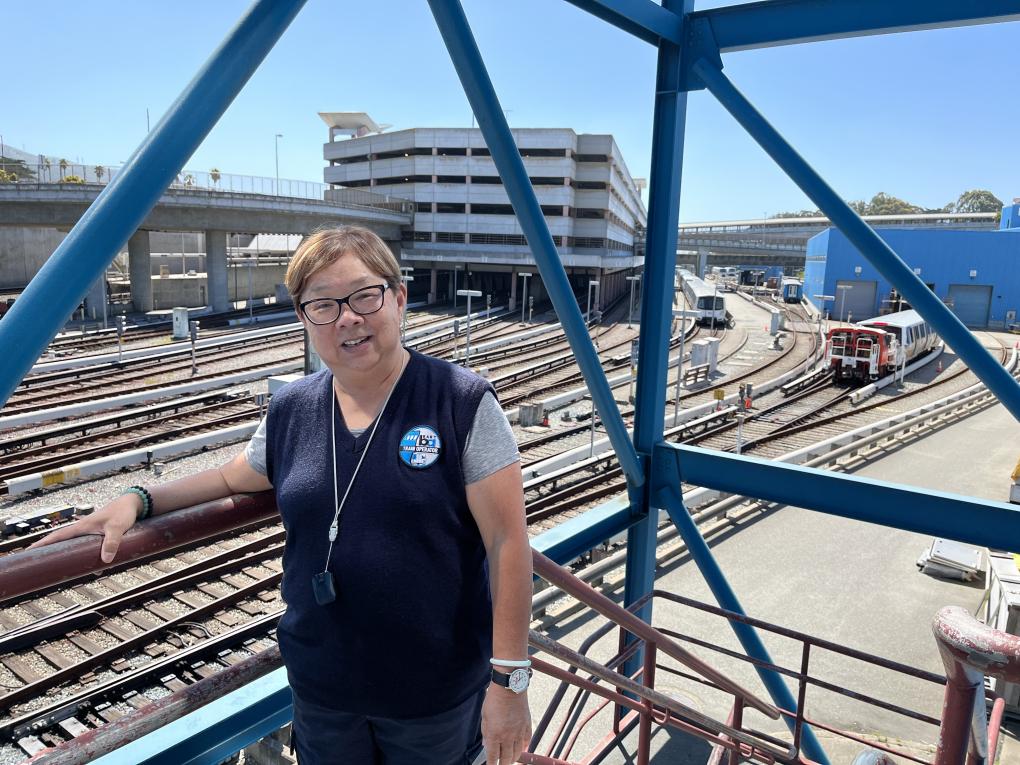
After 33 years as a Train Operator, Linda Yee-Sugaya, better known as Mama Linda, has seen a lot. She’s watched the old trains become the new; stations built and BART lines lengthen; and thousands of faces stream past the windows of her train.
An artist creates fantastical pop culture scenes with BART as her canvas and riders as her subjects
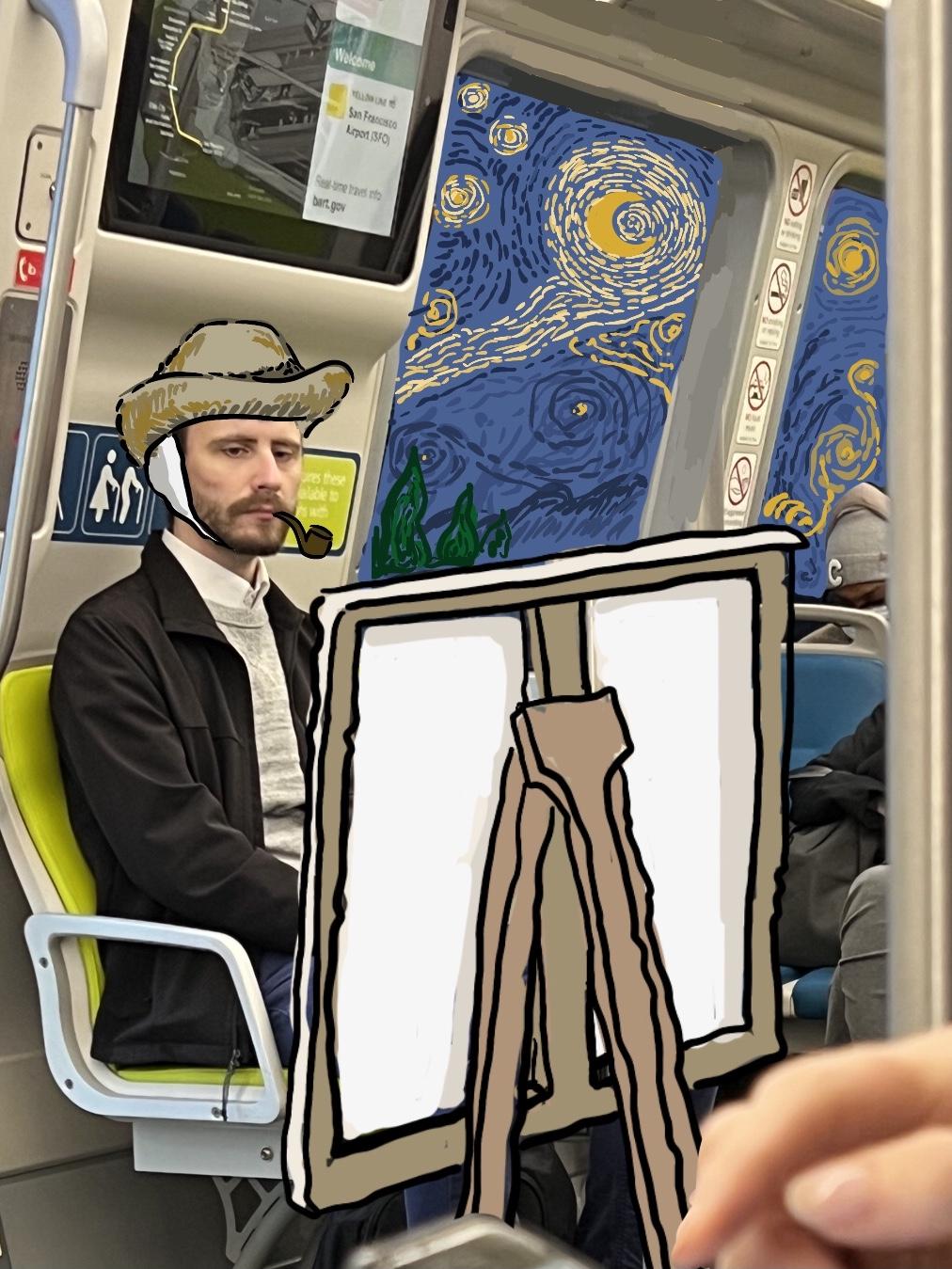
"Some people read, some people work, some people apply makeup,” says Joanna Sokua of riding BART. “I draw.”
Since 2017, Sokua has been creating what she calls “BARToons” during her morning and evening commute. You might say she is a seasoned BARTist. In the past seven years, she has drawn more than 170 BART illustrations. While on the train, she snaps photos of scenes and passengers that spark an idea, and when she gets home, she’ll sketch them out or, most often, superimpose pop culture figures onto the images using a digital pen.
The biggest BART fan in Japan flew to the Bay for a day to ride a legacy train one last time

On Friday, April 19, at 3pm, Atsushi Goto’s plane touched down at San Francisco International Airport. He hastily collected his carry on, went through customs, and dashed toward the SFO BART station. A train was waiting for him on the platform.
The 24 hours that followed his touchdown were a whirlwind of a trains, buses, cable cars, and one big party for a bunch of old trains at MacArthur Station – BART’s retirement celebration for the legacy trains. On the night of Saturday, April 20, just over a day after arriving, Atsushi was on a plane again, headed back home to Japan. Atsushi is an automobile designer, and on Monday, he had work.
BART Connects: This rider uses their BART System Map tattoo to give directions
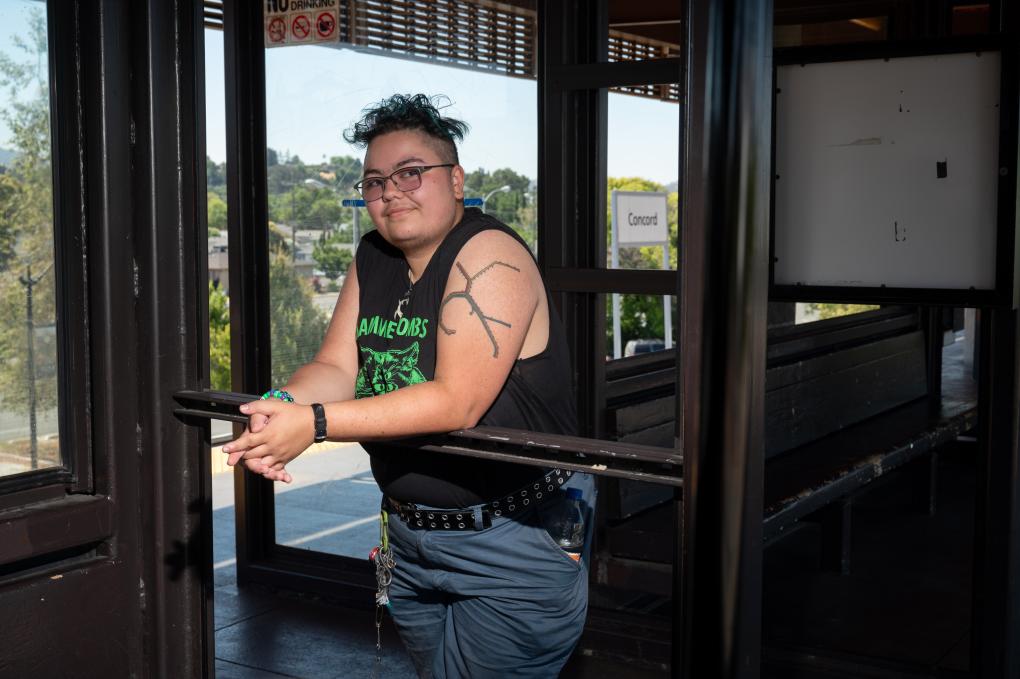
When Sam Johnson sees someone lost in a BART station, they roll up their sleeve and show them a bicep.
Etched five layers deep into the epidermis of Sam’s left arm is a tattoo of the BART System Map. It’s Sam’s first and only tattoo, and in a pinch, it comes in handy.
“I’ve helped a bunch of people figure out where to go,” Sam said. “I point to my arm and say, ‘We’re here in Concord, you’re going to transfer to this station, then ride along here, and get off at this station.’”
It’s a practical tattoo but also a piece of art, an homage to the Bay, a love letter to transit. And let’s be honest, said Sam, “It looks good on me.”
Podcast: The future is now; the journey of the Fleet of the Future from blueprint to backbone of BART’s daily service
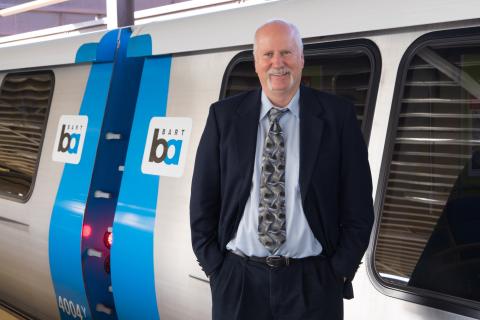
BART’s base train schedule now consists of all new Fleet of the Future trains, a major milestone for a project that’s been more than a decade in the making. Project Manager John Garnham reveals how fast the new cars speed along BART’s test track, explains why the process of building the outer shell is a bit like using a classic DIY toy and other insider nuggets on our podcast, “Hidden Tracks: Stories From BART.”
The Transbay Tube turns 50: Inside the groundbreaking history and future of the Bay's underwater crossing
On the Transbay Tube’s 50th anniversary, BART honored this one-of-a-kind structure that has ferried millions of passengers across the Bay for five decades and will continue to do so for decades to come. In the above video, we invite you to look inside the engineering opus for yourself.
BART Connects: BART showed Steve and Vanessa that "there is life out there"
July 26, 2024, marked the 34th anniversary of the Americans with Disabilities Act (ADA), which was signed into law on July 26, 1990. The ADA protects the rights of those with disabilities and is recognized as a watershed milestone for civil rights in the U.S.
More than 7% of BART riders have a disability (as self-reported in a 2022 survey), including Steven Howell and Vanessa Castro. Steven and Vanessa use BART to get just about everywhere. Says Steven: "[BART] showed me there is life out there."
Hear more from the couple in the above video.
BART Police Chief gives update on officer killed in line of duty
Sgt. Tommy Smith Statement from BART Police Chief Kenton Rainey: "On behalf of the SF BART, I am here this morning to confirm the reports that it was in fact Sgt. Tommy Smith who was tragically killed in the line of duty yesterday afternoon. As it was reported last night Tommy and other members from the
October 17: BART participates in Great California ShakeOut 2024

BART will participate in the 2024 International ShakeOut Day earthquake drill on Thursday, October 17, to test our emergency response systems and to help raise public awareness of the importance of having a plan and being prepared.
At 10:17am, BART staff will trigger our ShakeAlert early warning earthquake system to ensure it is functioning and working correctly. Once triggered, trains will automatically slow down to 27 mph. Then all trains will come to a very brief stop. BART will also make a systemwide public announcement encouraging riders to be prepared for earthquakes. BART will also test our internal communications systems to notify employees and the Operations Control Center will observe earthquake alarms and our train control systems to ensure they are working properly.
ShakeAlert Early Warning Earthquake System
BART is an early adopter of the ShakeAlert system, which is connected to seismic stations located throughout Northern California. When the alarm is triggered, the system sends a speed restriction command to trains. This system removes human response time and can even slow trains down before the shaking occurs depending on how far away the quake is centered.
BART to Simulate Damage Inspections
BART has added simulated damage inspections to its ShakeAlert drill. Shortly after ShakeAlert is triggered Thursday, about 60 engineers will divide into teams and fan out to all 50 stations to conduct structural assessments. The engineers will inspect walkways, support structures, elevators, escalators – anything that could sustain damage in a powerful earthquake. The simulation is designed to identify areas for improvement and to exercise “muscle memory” for BART’s earthquake response.
Emergency Response Plan
BART has an Earthquake Emergency Response Plan, and we hold several drills a year to ensure staff is trained and ready to respond. In the event of an earthquake, riders should listen for instructions from BART personnel. Employees are trained to evacuate the public from dangerous areas. Following an earthquake, BART trains are held in place (except for trains in the Transbay Tube and BART Caldecott Tunnel) until it is determined it is safe to move the train to the nearest station where riders will be offboarded.
Earthquake Safety Tips
Where will you be and what will you do when the next big earthquake hits? Taking time to consider these questions now could help if you ever do find yourself in an earthquake.
LISTEN FOR INSTRUCTIONS
That’s one reason why the first guideline in a BART emergency is to follow instructions from BART personnel. The BART Operations Control Center is in constant communication with trains and Station Agents and is in the best position to manage emergencies and provide direction for the public.
ON A TRAIN
If you’re on a train during an earthquake, Train Operators will follow BART’s established emergency plan and provide you with important information. Sit down or grab a handhold to avoid injury. If an evacuation is necessary, emergency response personnel will coordinate.
IN A STATION
If you’re in a station during an earthquake, back away from the edge of the trackway. If you’re in the station concourse, don’t proceed to the platform. Instead, prepare to evacuate the station under the direction of BART personnel.
TRY TEXTING
No matter where you are, emergency experts recommend using text messaging instead of cell calls to communicate with family and loved ones in an emergency. Cell networks can be overwhelmed if everyone’s trying to call at the same time; text messages can be more efficient.
Earthquake Safety Program Completed in 2024
In September 2024, BART completed its Earthquake Safety Program, which retrofitted vulnerable high traffic portions of the original system to make it safer in a large quake. The Earthquake Safety Program was funded in part by Measure AA, a $980 million general obligation BART bond approved by voters in 2004. The program focused on upgrading portions of the original system not only for life safety but also to ensure that we can return to operation shortly after a major earthquake.